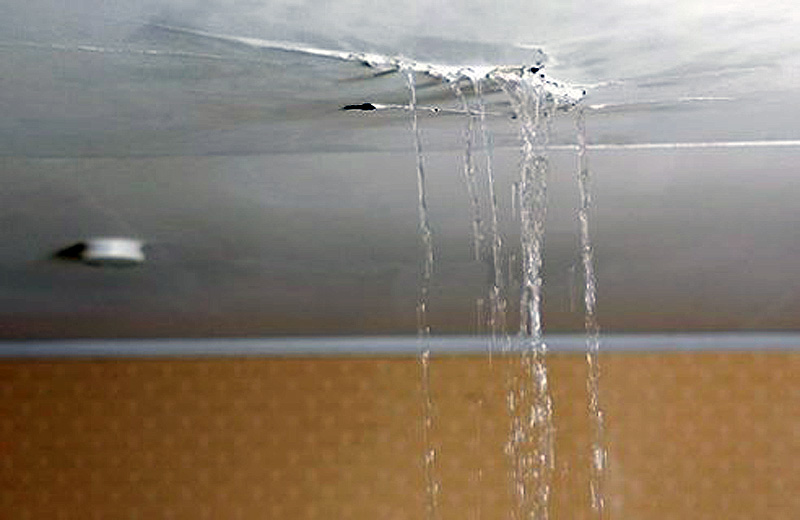Welcome to Part 2 of our blog on potential causes of flood damage and water damage lurking in your building.
As we mentioned in Part 1 of our blog, a typical water damage claim amount for a single-family home ranges roughly from about $2,000 to $10,000 per occurrence. However, for a multi-unit building the low-end claims that we are seeing are in the tens of thousands of dollars range and many of the cases we consult on are in the hundreds of thousands of dollars range, with some exceeding one million dollars.
Flood damage or water damage can occur from any number of sources, any time of the year, and a small leak can become catastrophic instantaneously. What’s more, water tends to travel very quickly throughout a building and over great distances from its source.
Below are five more sources of water damage collected from actual claims that we have provided expert witness services on involving significant property damage and, in some cases, extensive and costly litigation. Building owners and operators should be aware of these and take steps to identify and mitigate them in their buildings. This is by no means an exhaustive list and the items on the list are not presented in any particular order of importance, as they will vary from building to building based upon things like age and construction type.
Here they are:
6. Water Heater Issues – Water heaters can burst or leak and their safety relief valves can fail causing serious flooding. The chances of a water heater leaking or bursting increase exponentially after about five years of use. About 75% of water heaters will fail before they are 12 years old. Have your water heaters checked annually by a qualified professional and replace at the first signs of eminent failure. Flush water heater tanks every six months to remove sediment. Be aware of safety recalls.
7. Improper Air Conditioning Unit Condensate Drainage – A lot of structural damage comes from the improper drainage of air conditioning unit condensate drains. Typically air conditioning coil units are placed in locations that are difficult to access. The improper drainage can occur unseen for extended periods of time, years sometimes, before the real damage is noticed. Inspections should be made of all air conditioning units to be sure that proper condensate drainage is in place.
8. Building Cladding Issues– One of the most common sources of water infiltrating a building is through its cladding or siding. We come across a lot of water infiltration through concrete block and brick masonry in particular. Concrete block adsorbs water and brick veneer can too. Also, many brick veneer assemblies are not constructed properly and lack proper back drainage, water-proof membranes, and weep holes. Siding products can be installed improperly and can also be the subject of class action lawsuits for inherent defects. We have also seen our fair share of improperly applied exterior stucco systems. All of these issues can be resolved or repaired but with the expertise and guidance of a well qualified engineer who will evaluate the situation and determine the most cost-effective approach.
9. Defective or Improperly Installed Windows – Class action lawsuits against window manufacturers are quite frequent. Defective window claims are common, but equally as important as the window is how it gets installed. Sizing issues, incompatibility issues, improper flashing materials and techniques, and poor connection and insulation techniques can all lead to moisture infiltration and/or accumulation. When specifying windows for new construction or retrofits do your homework. Better yet, have a qualified engineer guide you through selection process and troubleshoot existing issues. Your engineer will start with the building’s construction type, then make recommendations on windows, provide written specifications on how they are to be installed, and field-verify the installation.
10. Vulnerable Water Pipes – Whether you are located in a warm, dry climate or in a cold moist climate piping in vulnerable situations can cause extensive water damage. In Southern California for example, we have seen properties that experience multiple slab leaks per month (sometimes as often as once a day during certain periods of time). Copper pipes are laid on the ground with the concrete foundation slab-on-grade poured over them. The trouble is when the slab moves (especially in areas that have expansive clay soils) the pipes can break and release lots of water. On the East Coast, in the Mid West and in other colder climates, pipes exposed to the cold will freeze then burst. Pipes located in exterior walls and in unconditioned spaces are especially prone to bursting. Sometimes proper insulation techniques will solve the problem, but in many instances re-piping at least a portion of the building is the only feasible option. Re-piping portions of the building is also sometimes the most feasible option for slab leaks as well.
Each potential water damage source listed above is preventable or curable. But first, potential sources of water damage must be investigated and identified. Then, a mitigation plan needs to be put in place to address and rectify potential sources of water damage. Ways to quickly and adequately respond to a water release must be included in the plan as well.
Begin with a thorough and comprehensive inspection of the property by a well-qualified engineer to identify potential sources of water damage. Next, the engineer can prepare a building-specific water mitigation plan containing the proper and necessary action items necessary for making repairs and modifications to the building. The engineer can then help to make sure that the work is performed properly and correctly. By being proactive, costly water damage can be prevented.
Written by Joel E. Breuer, PE managing partner at HG Cornerstone. Mr. Breuer can be contacted at jb@hgcornerstone.com.

